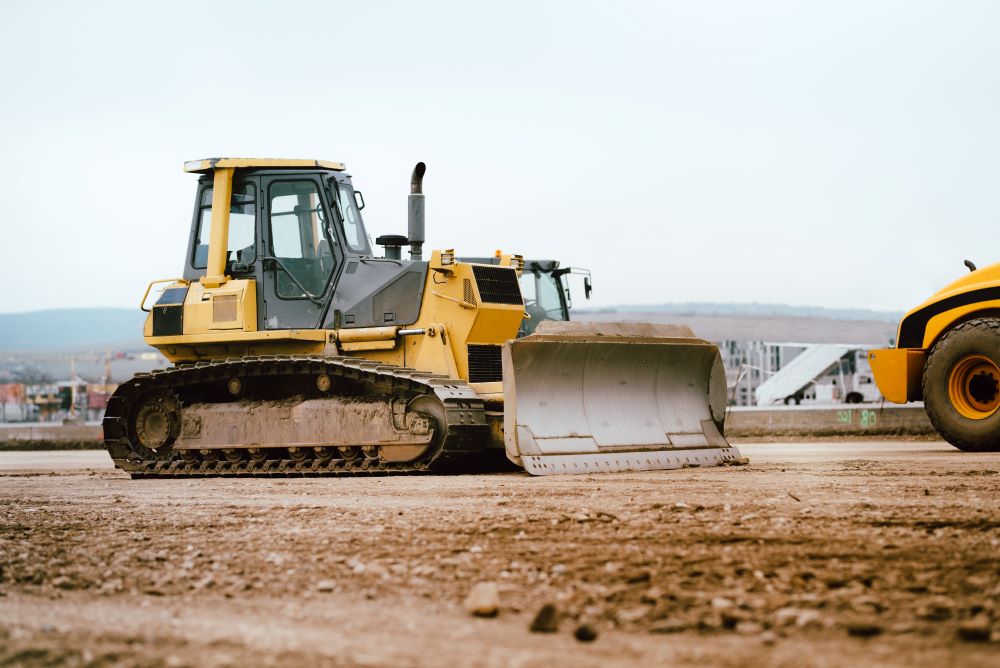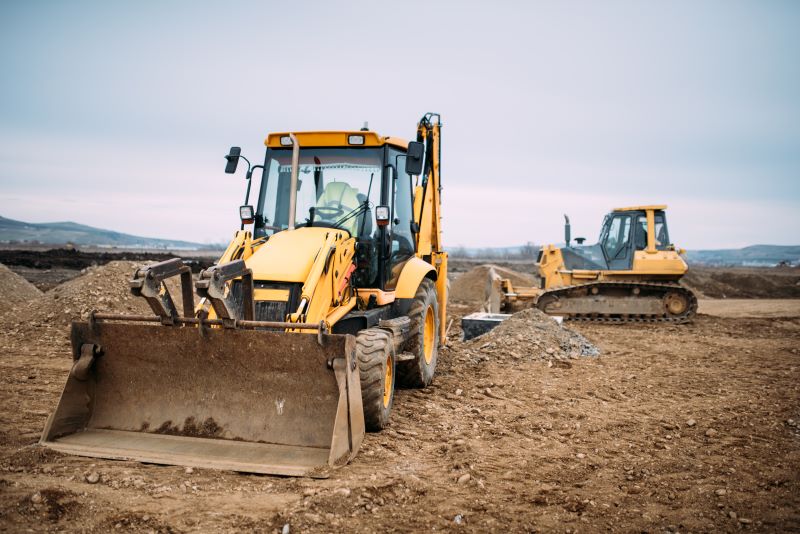I agree to the Terms & Conditions


General
General Products
Simple & Transparent! Policies that match all your insurance needs.


37K+ Reviews
7K+ Reviews
Scan to download
Life
Life Products
Digit Life is here! To help you save & secure your loved ones' future in the most simplified way.


37K+ Reviews
7K+ Reviews
Scan to download
Claims
Claims
We'll be there! Whenever and however you'll need us.


37K+ Reviews
7K+ Reviews
Scan to download
Resources
Resources
All the more reasons to feel the Digit simplicity in your life!
 Tools & Calculators
Tools & Calculators


37K+ Reviews
7K+ Reviews
Scan to download
37K+ Reviews
7K+ Reviews
 Logout
Logout
Our WhatsApp number cannot be used for calls. This is a chat only number.


2000+ Cashless
Network Garages
96% Claim
Settlement (FY23-24)
24*7 Claims
Support
I agree to the Terms & Conditions

Terms and conditions

Drive past any construction or mining site, and you’ll see a powerful earth-moving machine pushing large quantities of dirt, sand, gravel, trash and other materials around with ease. This is a bulldozer.
Different types of bulldozers are used for specific tasks and terrains. You can also attach a variety of implements to it to enhance its versatility and productivity.
So, if you’re looking to learn more about the type of bulldozers, applications of bulldozers, and what factors affect their productivity and efficiency, continue reading.
A bulldozer is a tractor made more powerful by mounting a heavy, broad steel blade or plate on its front, while some also have rippers at the back to help break up rough terrain.
This heavy-duty machine is used for various applications, including construction, moving dirt, mining, agriculture, landscaping, forestry, and military purposes.
A bulldozer can be used with various blades and other attachments available, which help it carry out various tasks like pushing, digging, excavating, levelling, etc., in different working conditions.

There are different types of bulldozers available, each designed to perform a specific operation on different kinds of terrains. Each type of bulldozer is available in multiple sizes to meet the extra power and handling requirements.
The common types of bulldozers are:
Also known as the track bulldozer, this type of heavyweight bulldozer typically features a heavy front plate to move earth from one location to another and push heavy materials.
Such bulldozers are most suitable for fields, irregular land, and abnormal terrain, as they offer superior traction. Also, bigger-sized crawlers feature rippers on the back to help crush and clear the ground, mainly used at road construction and mining sites.
As the name suggests, this is a compact-sized bulldozer that finds its application in grading work, clearing residential lots, sloping, backfilling, etc.
Mini dozers are ideal to use at narrow sites or residential areas where better manoeuvrability and flexibility are required, as their small size makes them easier to control and manoeuvre.
Commonly larger than a crawler bulldozer, this bulldozer relies on wheels to work around the site. The wheels make these bulldozers more manoeuvrable than crawlers and easy to handle.
Thus, wheel bulldozers are great for levelling and clearing land, like in stadiums, spacious grounds, water parks, etc.
These types of bulldozers have a compact and rust-resistant design, ideal for loading and unloading bulk cargo from commercial vessels, as their size enables high manoeuvrability. While their rust-resistant property makes them more suitable for operations in maritime worksites.
This bulldozer comes with a mulcher attachment designed to shred and grind pieces of debris, such as trees, brush and shrubbery, for clearing large land sites. Thus, this bulldozer can clear the land by grinding the vegetation into smaller pieces.
Mulcher bulldozer is the most suitable for preparing land for development in residential or commercial areas.
Hybrid bulldozers feature engines that use electric components along with the traditional engine technology, thus making them ideal for tasks where fuel consumption and emission may be a concern.
These dozers are equipped with a combination of blades to enable simultaneous operations in waterlogged and very rough conditions.
Though relatively new in the Indian market, hybrid bulldozers are as powerful as traditional bulldozers, more versatile, and consume less fuel.
Here are the essential elements that make up a bulldozer:
Bulldozers are among the most versatile and powerful machines for heavy-duty work. Some of its applications include:
Bulldozers are heavy-duty equipment essential for a various use; however, their efficiency and productivity on a construction site can be hampered due to several factors, such as:
Thus, bulldozers are powerful machines that can be used for a variety of operations. However, they also need to be secured in situations of damage or loss, such as accidents, theft, natural calamities, and third-party liability, etc.
So, get a commercial vehicle insurance policy that provides financial coverage in such situations.
Crawler bulldozer is the most common type of bulldozer. It features tracks and the ripper at the back. Crawler bulldozers are mostly suited for muddy or slippery surfaces, which require traction.
Crawler bulldozer is the most common type of bulldozer. It features tracks and the ripper at the back. Crawler bulldozers are mostly suited for muddy or slippery surfaces, which require traction.
There are four standard types of dozer attachments, rippers, winches, blades, and rakes. Each attachment is used for different specific tasks.
There are four standard types of dozer attachments, rippers, winches, blades, and rakes. Each attachment is used for different specific tasks.
Bulldozers are used for various purposes in mining. They are equipped with heavy-duty metal blades to move piles of dirt or coal from the mine, dig tunnels for deep mining, break down rock and earth to be moved, prepare the ground construction, etc.
Bulldozers are used for various purposes in mining. They are equipped with heavy-duty metal blades to move piles of dirt or coal from the mine, dig tunnels for deep mining, break down rock and earth to be moved, prepare the ground construction, etc.
Please try one more time!
Other Important Articles About Truck
Other Important Articles about Commercial Vehicle Insurance
Have queries related to Digit motor insurance policy? You can refer to our Policy Wordings for detailed information or reach out to our support team via WhatsApp self-support, email or phone using the information below:
Connect with our self-serve chat bot support - 7026061234
Write to us at hello@godigit.com
Contact
Call us on 1800-258-5956
Other Motor Insurance Plans and Guides
Currently there are no news to show.
Read More
Renew & Download Policy Document, Check Challan, Credit Score, PUC & more
Anytime, Anywhere. Only on Digit App!

4.7
Rated App56K+ Reviews
4.7
Rated App
56K+ Reviews
4.3
Rated App11K+ Reviews
4.3
Rated App
11K+ Reviews
Scan to Download


Author: Team Digit
Last updated: 07-04-2025
CIN: L66010PN2016PLC167410, IRDAI Reg. No. 158.
Go Digit General Insurance Limited | Corporate Office Address: Atlantis, 95, 4th B Cross Road, Koramangala Industrial Layout, 5th Block, Bengaluru 560095 | Registered Office Address: 1 to 6 floors, Ananta One (AR One), Pride Hotel Lane, Narveer Tanaji Wadi, Shivaji Nagar, Pune-411005, Maharashtra | Trade logo of Go Digit General Insurance Ltd. displayed above belongs to Go Digit lnfoworks Services Private Limited and is provided and used by Go Digit General Insurance Ltd. under license.
Explore exclusive features, file claims & access policy on Digit App!
You can also scan this QR code to download the App.